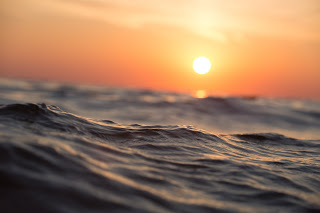Mumbai Plastic – They Mean Business, Saving Hammerheads in Galapagos, Walrus Tusk Poacher Indicted, Plastic in Starfish Diet, Mega Bridge Causes Dolphin Population Decline, Blue Fin Tunas Emerge in California And More…
 From Starbucks and McDonalds to tiny street food stall owners, no one is exempt from the ban on single-use plastic, introduced on 30 June by the authorities in the state of Maharashtra and in Mumbai, its capital. The ban was prompted by vast quantities of plastic rubbish clogging up the already blocked drains during this year’s monsoon. Most other Indian cities are scarred by mountains of plastic, but Mumbai, with its 20 million people concentrated in a tiny island, experiences near-catastrophic disruption during the monsoon when sewers and drains fail to cope with the rain. The ban prohibits the use of plastic bags, disposable cups and plates, and bottles under a certain size.
From Starbucks and McDonalds to tiny street food stall owners, no one is exempt from the ban on single-use plastic, introduced on 30 June by the authorities in the state of Maharashtra and in Mumbai, its capital. The ban was prompted by vast quantities of plastic rubbish clogging up the already blocked drains during this year’s monsoon. Most other Indian cities are scarred by mountains of plastic, but Mumbai, with its 20 million people concentrated in a tiny island, experiences near-catastrophic disruption during the monsoon when sewers and drains fail to cope with the rain. The ban prohibits the use of plastic bags, disposable cups and plates, and bottles under a certain size.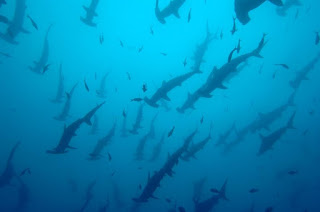
Hammerhead sharks, with their unique, wide-eyed appearance, are among the most iconic species in the Galapagos. But as the sharks become increasingly endangered, scientists are searching for ways to help their population rebound. One way they’re doing it is by searching for where hammerhead sharks have their babies (called pups). Past studies have documented where and why some of the region’s hammerhead populations migrate, but scientists have been struggling with one mystery—where the females that live around the Galapagos’s Darwin and Wolf Islands go to have their pups.
3. Ivory Dealer Indicted for Walrus Tusk International Trade
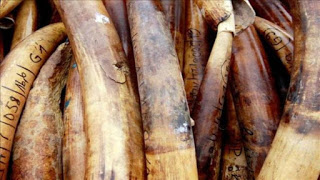
Alaska ivory dealer has been indicted for illegally exporting, and then importing, walrus ivory, violating federal law. James Terrance Williams, 67, of Skagway, who operates the company Inside Passage Arts, is being charged for smuggling that took place back between 2014 and 2016. According to prosecutors, at that time, Williams sent raw, un-worked walrus ivory from Alaska to Indonesia to be carved there. He then allegedly would import that ivory back into the states, selling it as though it had been worked by Alaska Native artisans.
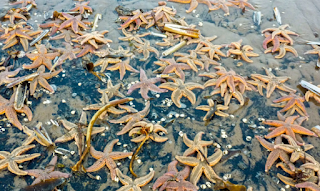 Local marine life living off the Outer Hebrides have been feeding on plastic for at least four decades, researchers have discovered. Scientists examined and archived specimens of animals collected at depths of 2,000 m (6,561.8 ft) down off the Western Isles. Traces of eight different plastics were found in the stomachs of the starfish, sea stars and brittle stars. The animals were collected between 1976 and 2015.
Local marine life living off the Outer Hebrides have been feeding on plastic for at least four decades, researchers have discovered. Scientists examined and archived specimens of animals collected at depths of 2,000 m (6,561.8 ft) down off the Western Isles. Traces of eight different plastics were found in the stomachs of the starfish, sea stars and brittle stars. The animals were collected between 1976 and 2015.5. A New Tuskless Walrus from the Miocene of Orange County, California
 This paper describes Titanotaria orangenesis (gen. et. sp. nov.), a new species of walrus (odobenid) from the upper Miocene Oso Member of the Capistrano Formation of Orange County, California. This species is important because: (1) It is one of the best-known and latest-surviving tuskless walruses; (2) It raises the number of reported odobenid taxa from the Oso Member to four species making it one of the richest walrus assemblages known (along with the basal Purisima of Northern California.
This paper describes Titanotaria orangenesis (gen. et. sp. nov.), a new species of walrus (odobenid) from the upper Miocene Oso Member of the Capistrano Formation of Orange County, California. This species is important because: (1) It is one of the best-known and latest-surviving tuskless walruses; (2) It raises the number of reported odobenid taxa from the Oso Member to four species making it one of the richest walrus assemblages known (along with the basal Purisima of Northern California.
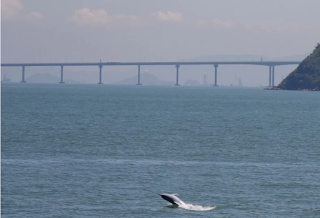 Labour rights and conservation activists highlighted the deaths of workers and the destruction of dolphin habitats in construction of the Hong Kong-Zhuhai-Macau Bridge as the opening ceremony for the mega infrastructure link took place on Tuesday morning. Conservationists also called for a review of Hong Kong’s environmental assessment system, saying loopholes meant mitigation measures had been ineffective in halting the drop in the number of Chinese white dolphins in the area. Construction of the bridge, which cost Hong Kong about HK$120 billion (US$15.3 billion), began in 2009. Building on the Hong Kong end started in 2011.
Labour rights and conservation activists highlighted the deaths of workers and the destruction of dolphin habitats in construction of the Hong Kong-Zhuhai-Macau Bridge as the opening ceremony for the mega infrastructure link took place on Tuesday morning. Conservationists also called for a review of Hong Kong’s environmental assessment system, saying loopholes meant mitigation measures had been ineffective in halting the drop in the number of Chinese white dolphins in the area. Construction of the bridge, which cost Hong Kong about HK$120 billion (US$15.3 billion), began in 2009. Building on the Hong Kong end started in 2011.
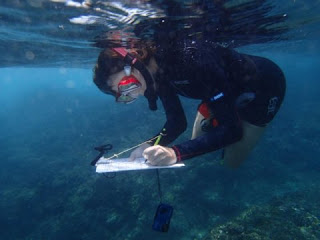 Researchers found that when water temperatures heat up for corals, fish ‘tempers’ cool down, providing the first clear evidence of coral bleaching serving as a trigger for rapid change in reef fish behavior. Publishing in Nature Climate Change this week, researchers from Lancaster University and collaborating institutes including the ARC Centre of Excellence for Coral Reef Studies (Coral CoE), show how the iconic butterflyfish, considered to be sensitive indicators of reef health, can offer an early warning sign that reef fish populations are in trouble.
Researchers found that when water temperatures heat up for corals, fish ‘tempers’ cool down, providing the first clear evidence of coral bleaching serving as a trigger for rapid change in reef fish behavior. Publishing in Nature Climate Change this week, researchers from Lancaster University and collaborating institutes including the ARC Centre of Excellence for Coral Reef Studies (Coral CoE), show how the iconic butterflyfish, considered to be sensitive indicators of reef health, can offer an early warning sign that reef fish populations are in trouble.More than 10 million tons of plastic debris enter the oceans every year and are found in nearly every oceanic layer. They start out as large floating items and eventually break down into much smaller pieces called microplastics. These particles are pervasive and have been found in the digestive tracts of more than 100 different species, posing physical, chemical and even potential biological harm to these animals. Mussels and other bivalves like oysters and clams are eaten whole without removal of the gastrointestinal tract and therefore represent a pathway for microplastics to enter the human food chain.
Large Pacific bluefin tuna not seen in California waters for decades have reappeared, to the delight of fishing enthusiasts and scientists, as global conservation efforts have proven effective for one of the ocean’s priciest and most sought-after fish. Overfishing of bluefin tuna spurred by a growing global appetite for sushi resulted in a critical decline in stocks over decades. But measures by the United States, Japan, Mexico and others to limit their take have led to population growth, though tuna populations are still below historic levels.
Read more Reuters
10. National Advisory Panel on Marine Protected Area Standards Releases Final Report
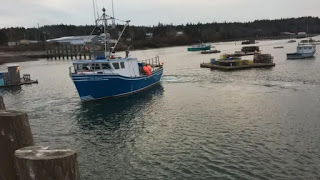 the National Advisory Panel on Marine Protected Area Standards released its Final Report and recommendations to the Minister of Fisheries, Oceans and the Canadian Coast Guard. Established in the Spring of 2018, the Panel’s mandate was to gather perspectives and offer recommendations to the Minister on categories and associated protection standards for federal Marine Protected Areas (MPAs) using International Union for Conservation of Nature (IUCN) guidance as a baseline. They were also invited to examine relevant recommendations of the Indigenous Circle of Experts and its recommendations on the concept of Indigenous Protected and Conserved Areas.
the National Advisory Panel on Marine Protected Area Standards released its Final Report and recommendations to the Minister of Fisheries, Oceans and the Canadian Coast Guard. Established in the Spring of 2018, the Panel’s mandate was to gather perspectives and offer recommendations to the Minister on categories and associated protection standards for federal Marine Protected Areas (MPAs) using International Union for Conservation of Nature (IUCN) guidance as a baseline. They were also invited to examine relevant recommendations of the Indigenous Circle of Experts and its recommendations on the concept of Indigenous Protected and Conserved Areas.

